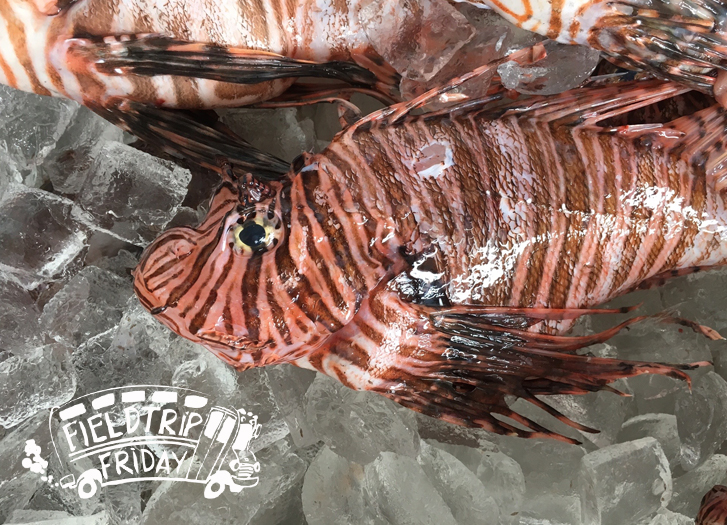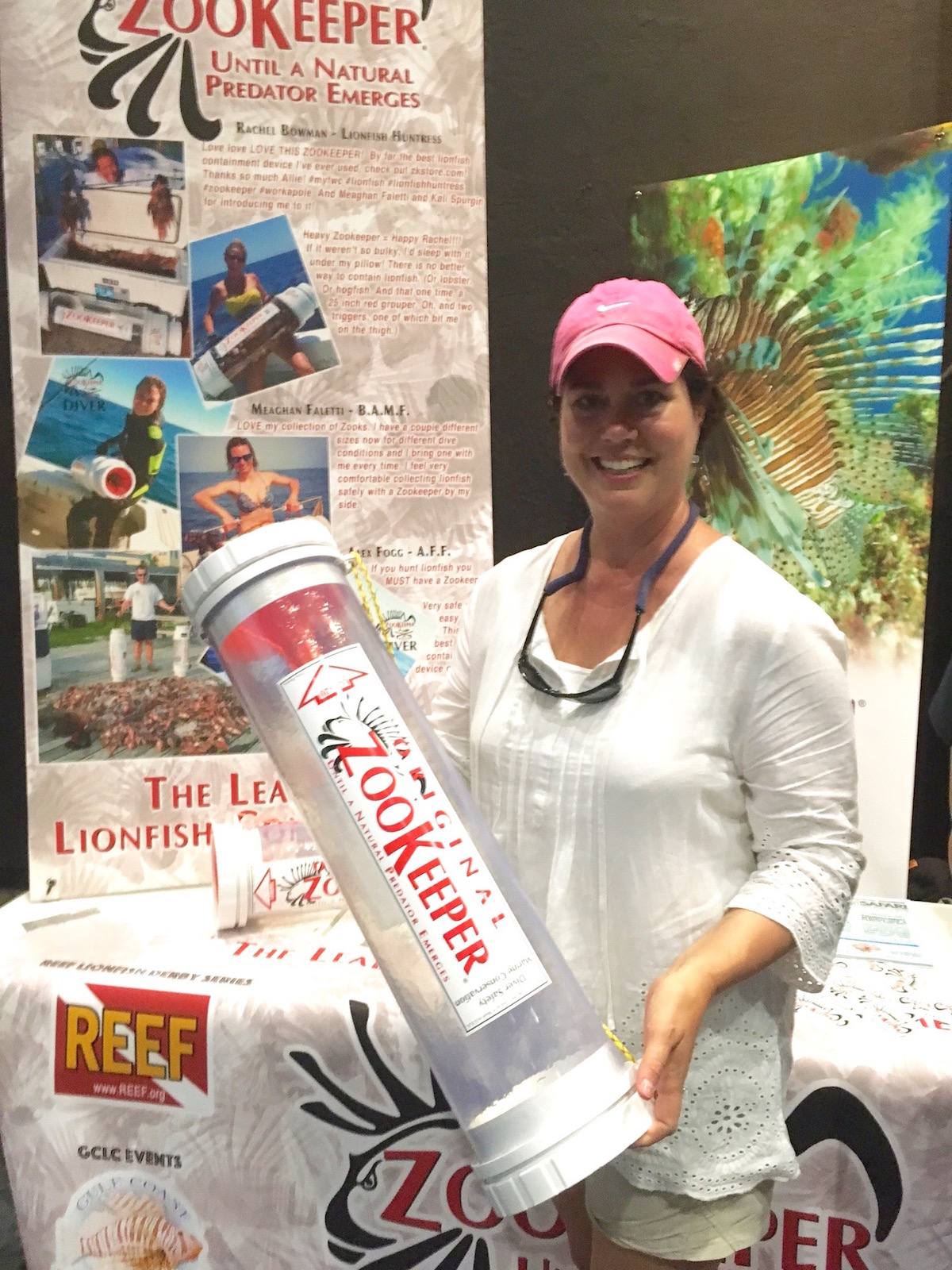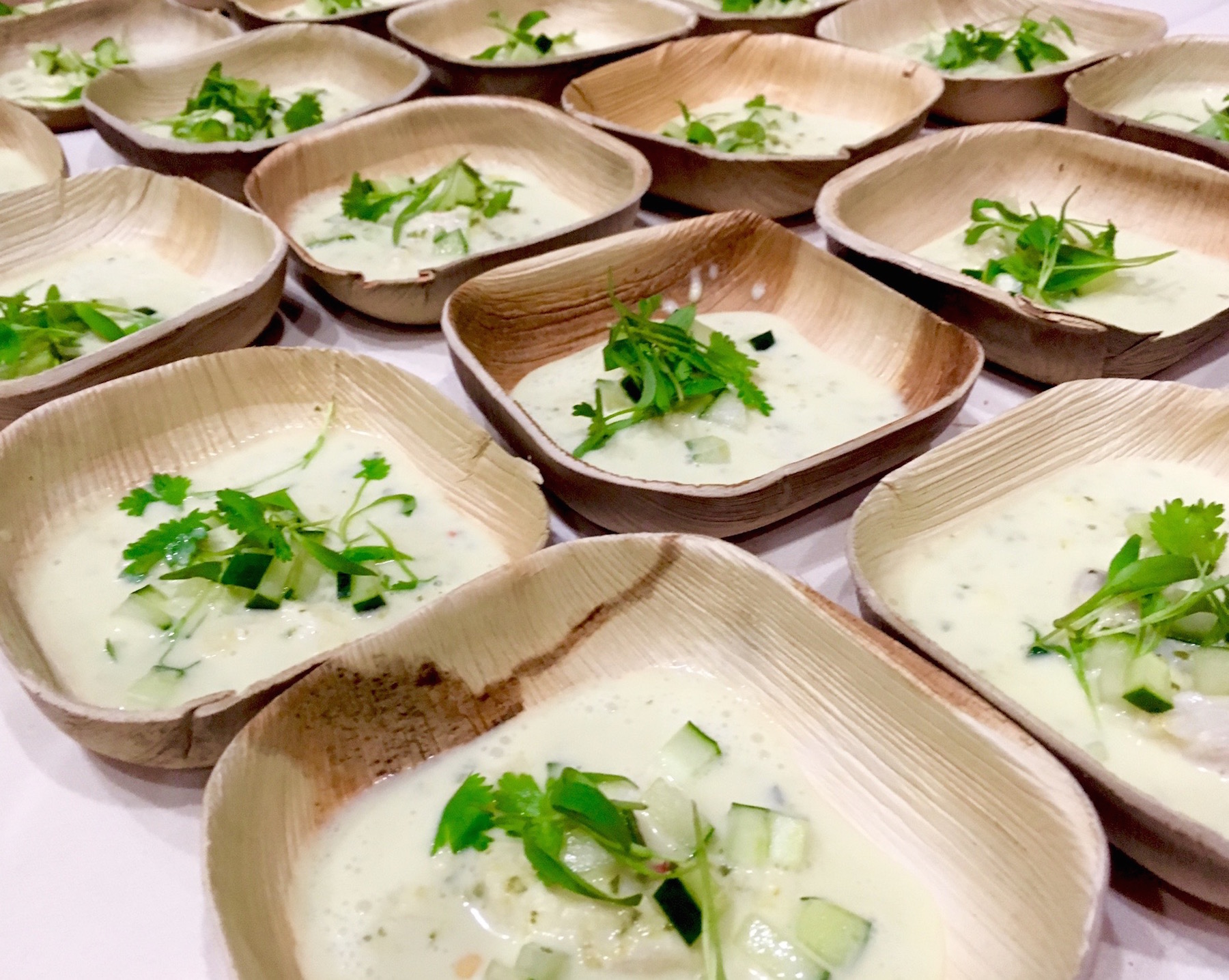
(Field Trip Fridays capture interesting, fun, food-related and/or fishing adventures that I like to share with you!)
Be honest, the first time you saw this fish you probably thought it was just something for your exotic saltwater fish tank, right?
I really didn’t know what to think when I saw Lionfish for the first time. I thought they were beautiful, but also scary-looking. And knowing they’re poisonous, my first reaction was to stay away at all costs.
My husband rolls his eyes when I say things like “knowledge is power!” and “people crave information!” (it must have something to do with my human resources background), so a while back I dusted off my own platitudes and started learning about this interesting fish.
Statistics show that it’s an invasive species having a significant, negative impact on our natural fishery, especially in the Gulf of Mexico. I, for one, enjoy being able to fish wherever I want, certain in the fact that there will be plenty of fish to go around if I put a hook in the water. But when I learned that just one Lionfish can consume as many as 20,000 small fish and invertebrates in a year, I got concerned. In addition, they have no known predators, and can reproduce about every four days (in warm climates) so you can understand why this is a huge problem. Oh, and when it comes to the facts surrounding its ‘poisonous’ nature, I was relived to learn that once you remove the venomous part of their spines, the fish is no longer dangerous – and the flesh is not affected by the venom. You definitely have to take safety precautions when filleting it, but once you remove the venomous part, you can fillet them the same as any other fish and the result is a beautiful, bright, clean fillet.
See? Knowledge is power!
Thankfully, several agencies, including US Coast Guard, National Oceanic & Atmospheric Administration (NOAA), Simon Fraser University, Mote Marine Laboratory, REEF, and Florida Fish & Wildlife, among others, have been working together to gather information, study the impact of this fish, and try to reduce its population. One of the most successful endeavors, coordinated through Reed Environmental Education Foundation (REEF), is Lionfish Derbies, in which divers compete for prizes by catching/spearing as many as possible. The events not only remove significant numbers of fish from the ecosystem, but also, bring this delicious fish into the local economy (including our plates), which benefits everyone. As an example of impact from just one Derby, at the Palm Beach event a few years ago, divers nabbed over 1,000 Lionfish. Those fish alone would have consumed almost 9 million small fish over a year! With regular events like this, you can see how impact can occur.
I recently attended Mote Marine Laboratory’s 3rd Annual Lionfish Derby. More than 300 folks turned out for the opportunity to see the fish up close, learn about the species, taste some delicious dishes, and hear results of the competition. Six teams competed for three prize categories – Smallest Fish, Largest Fish and Most Fish. A total of 429 fish were caught, with one team alone bringing in 349! Divers were armed with spear guns, heavy duty gloves and specially designed containers to safely hold and transport the fish. Below is a pic of me holding a specially-designed capture tube for divers, created by Zookeeper, a Sarasota-based company. If you want to see some interesting footage about how divers capture and store the fish, check out their website – it’s cool to see the process in action.

At the event, chefs from Indigenous, Beach House, Mattison’s and Seafood Shack served creative dishes like a po-boy sandwich, curried ceviche, fish taco and BLT — all using fresh Lionfish. I tasted each one and was amazed at how delicious it was in every preparation – a testament to its versatility. As an experienced fish-taster (that’s right, I’ll claim it) I’d say it reminded me of Snapper (Hogfish especially), with a little Grouper mixed in. Very light, mild, flaky and delicious.


I encourage you to try this fish if you see it on the menu at a restaurant. In the Sarasota/Bradenton area, you’ll see it on menus at Indigenous, The Beach House and several others. OR, pick some up if you see it at a fish market and try it at home. You might find prices to be a little high, but that’s because it’s not consistently available to vendors, and there’s just not enough DEMAND for this fish yet. The way to remedy that is to ASK for it and suppliers will work hard to get their hands on it, which, over time, drives retail prices down. So, let’s all “Eat the Enemy!”
Whole Foods in Sarasota is one of 26 in the chain that are selling it throughout Florida. I picked some up after the Derby and have been trying it in my own kitchen. Stay tuned for a recipe or two.
P.S. If you’d like to get involved in a Lionfish Derby in your neck of the woods, check out REEF where you’ll find information about upcoming events and ways to get involved.




Thank you Heather! I’m so glad you’re finding inspirational recipes. Interesting info about your experience with Lionfish. . .maybe the dive master will be right! Thanks for following my blog and let me know if you try any other recipes 🙂
It’s an amazing fish. Hopefully we’ll start seeing it more regularly in our fish markets 🙂
Thank you for writing about the tasty Lionfish! I first speared one about five years ago in Cozumel; we cut off the venomous spines and fed it to an eel. (The divemaster told me this may help them develop a tolerance…?). Flash forward five years, I moved from Houston, TX to Gautier,MS. We dive most weekends, have a zookeeper and try to do “our part”.
I have been perusing your recipes, and made the basil cream scamp one a few weeks ago with some fresh scamp – EXCELLENT! Thank you for your recipes, your educational website and your stories!
Best,
Heather
Fascinating! This is great information on the Lionfish!